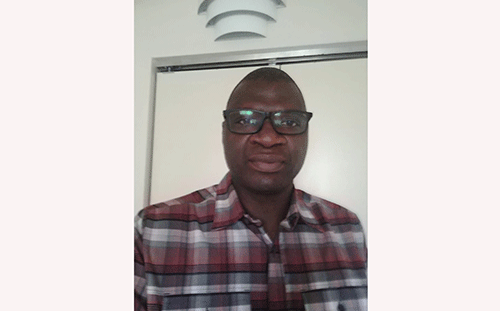Kapule David Mabuta
Academic freedom is critical to any progressive and thriving democratic nation.
Most Western nations that boast of political, economic and technological advancement enjoy unfettered academic work and freedom.
However, there are safeguards against academic dishonesty, such as rules relating to the originality of scholarly work, rules against plagiarism, self-plagiarism and rules on how to treat human subjects in research.
Academic freedom is, therefore, not blanket freedom.
Acknowledging sources of information is a required academic endeavour. Deliberate distortion of facts, creation of alternative facts, cherry-picking facts, and overstating research findings run contrary to academic freedom.
This is the point where I differ very strongly from Professor Makala Lilemba.
First, I note that Professor Lilemba lacks the ability to pay close attention to detail.
This is not a good sign for a member of the professoriate. In his opinion piece of 16 September 2022, ‘Trying to silence academic freedom!’, Professor Lilemba, addresses me as Mr David Mabuta Kapule.
This is despite me having properly identified myself as Kapule David Mabuta.
He falsely and wrongly claims that I accused Mafwe of being members of ZANABO, yet I clearly spelled out what ZANABO is and its objectives. Deliberate distortion of information equals academic dishonesty.
Professor Lilemba claims that I or ZANABO – the Subiya online platform –distorted the origins of the Mafwe.
This is far from the truth.
The ZANABO-Subiya platform follows the academically and linguistically determined standards for classifying Bantu languages/peoples/tribes.
The ZANABO-Subiya platform strictly follows the linguistic rules established by Malcolm Guthrie in his seminal doctoral dissertation of 1948 and related works by Harry Hamilton Johnson (1919), Reverend Edourd Jacottet (1896, 1899), Encyclopedia Britannica (1911) and Professor Christine Saidi (2010) to cite only these.
Let Professor Lilemba present the typology he follows in defining Malozi and Mafwe.
The Luyana found the Subiya well established in the Senanga region of Western Province of Zambia as early as 1500s or late as 1600s under Chief Mwanamwalye who resided at Sesheke (Flint, 2003, p. 399; Manning, 2011; Pretorius, 1975, p. 21).
Secondly, when Sebitwane crossed the Zambezi River at Kazungula into Tokaland, he encountered Chief Liswani I, who helped him cross the Zambezi River since Sotho people are not riverine.
Later around 1838 Chief Sebitwane assassinated Chief Liswani I, at Naliele, a now Mankoya place in the Western Province of Zambia (Nettleton, 1926; Ramsay, 2002; Ramsay, Morton & Mgadla, 1996; Sillery, 1952).
This is a clear demonstration that the Subiya had a political structure long before the Luyana existed.
Thirdly, there was no presence of Luyana leadership structures in the Zambezi region.
There were occasional raids, first carried out by Prince/Chief Mwanambinyi on the Subiya and Mbukushu in the Katima Mulilo area.
Yes, Sebitwane occupied some corners of the region around Linyanti area. That is why even to date his descendants still exist there.
It is a fact that the Mafwe are relatively new in literature and were first created by German colonialism in 1909 (Pretorius, 1975, p. 24).
Professor Lilemba should cite any mention of the Mafwe in literature before 1909. On the claims that Richard Roth made a proposal to Streightwolf to recognize Chief Mamili as paramount chief of the Caprivi Strip, is questionable as Streightwolf started with the installation of Regent Chika Matondo Tongo.
Professor Lilemba should present some evidence. Pretorius (1975) asserted that the Subiya had a long-established royal lineage. Professor Lilemba claims that leadership in the Caprivi Strip was introduced by the Lozi through their representatives: Imataa Kabaenda and Mwamba Siluka, and Subiya fell under Yeta III, the son of Lewanika.
As usual Professor Lilemba mixes truth and fiction. One truth is that Imataa Kabaenda the progenitor of the fake Mafwe royalty was not a chief but a Lozi representative.
The false part is that Yeta III was a ruler of the Subiya. There is no evidence of a khuta of the Lozi anywhere in the Subiya villages of the former Caprivi.
There is no record of any Subiya who was tried or convicted in Yeta’s khuta. Professor Lilemba can adduce the evidence if it exists.
“The paramount chief of the Mafwe, Chief Mamili, is genealogical of Subiya extraction, as are his more influential council members” (Pretorius, 1975, p. 13).
Subiya traditions state that Muyongo Kabaenda married Kabuba Mwanamwale, the daughter of a Subiya chief at Sesheke, and begot Imataa Kabaenda. Then the Mafwe royal lineage emerged.
How did Professor Lilemba miss the literature on Chief Matengu Mwanamwale who is even older than the first Lozi Chief Mboo Muyunda Mwanasilundu? Why did Professor Lilemba miss some literature on Nsundano in the 1600s and Liswani (Flint, 2003, p. 399; Mubitana, 1975, 63; Pretorius, 1975, p. 21; Sillery, 1952, pp. 190-193; Tlou, 1971, p. 34, 47, 145, 147). Professor Lilemba should invest in building academic depth befitting a member of the professoriate!
Mafwe have no notable liberation struggle heroes. The “many” people under Chief Mamili who were arrested, tortured, and killed including Mr Mishake Muyongo’s father were not actually in the struggle as combatants but were so dealt with on account of their relatives who went into exile but later returned in 1980 with their master Mr Muyongo.
Professor Lilemba should be humble enough to admit that his people did not participate, or at least partially participated but changed hearts in the middle of the struggle and returned to the Caprivi Strip to embrace colonialism as spies.
Professor Lilemba and his community have shown fewer signs of evolution and progression as a society. They were and still are opposed to the name change from the Caprivi Strip to the Zambezi region.
They continue yearning and clinging to colonial symbols and iconography. They are clinging to the Silozi language as a fake lingua franca and so-called mother tongue language.
Yet, Silozi does not constitute majority of languages spoken in the region. How does a language, spoken by a few, become lingua franca?
Only the fake intelligence of Professor Lilemba and his community can explain this anomaly.


